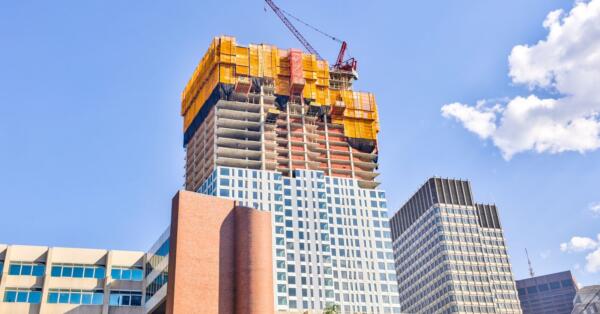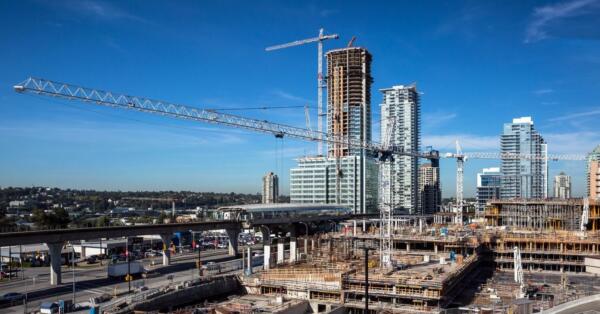When reviewing its options to a defaulted performance bond, a surety must assess remaining completion costs quickly and accurately in order to inform the strategy and decisions required to form a completion scenario. There are a number of factors to consider when estimating the cost to complete a defaulted project, including costs associated with:
- subcontracted work
- correction of deficiently installed work
- work that was self-performed by the defaulted principal
- supervising the work and providing any temporary requirements of the project
- furnishing warranties on the project
- any contingencies that should be covered
In this article, we examine what goes into developing completion cost estimates on defaulted projects and best practices in designing estimates so that the project completion is successful.
Subcontracted Construction Costs
In instances where the bond principal is a general contractor who self performs little work, this is largely an exercise of reviewing work that has been bought out to subcontractors, verifying those costs, and filling in gaps that are identified. The surety must first analyze all work currently under contract by the defaulted principal and assess the completeness of those buyout packages, making note of any exemptions or gaps in the subcontracted work. Any work that is not owned by a subcontractor or covered as self-performed work will need to be estimated so the surety can create a comprehensive estimate to complete the project.
Through the process of subcontractor ratification, the surety then further analyzes the costs necessary to complete all of the subcontracted work. Additional costs that may contribute to increases in existing subcontractor costs necessary to complete a project include:
- material and labor escalation
- settlement of delay claims
- other premiums to return to work
Correcting Deficient Work
When a defaulted project is restarted, it may be necessary for the surety to take a step back before it can progress the installation of new work. The surety should gain a complete understanding of both the extent of deficient work and the scope of work necessary to remedy it before moving forward.
- When a ratified subcontractor is responsible for defective work, they should be expected to remedy it at their own expense.
- When the bonded principal is directly responsible for deficiencies, the surety should capture costs needed to bring the work into compliance.
Estimating Self-Performed Work and Scope Gaps
Once the surety has evaluated the subcontracted work, the next step is to assess the cost to complete any work that was self-performed by the principal or excluded from the work already under subcontract. In matters where the principal is a specialty contractor or subcontractor, perhaps the majority of its work is self-performed. In these cases, in order to reflect true market pricing, the surety may elect to solicit proposals from subcontractors to perform the work that was otherwise self-performed by its principal. For example, if a general contractor subcontracted most of its work, but self-performed framing and drywall work with its own workforce, the surety could solicit proposals from carpentry subcontractors to perform this work that would have otherwise been self-performed.
The surety can also use available construction cost data and estimating methods to estimate the costs of remaining self-performed work. The use of digital takeoff software makes it particularly feasible to estimate the remaining quantities of work, and then use industry-standard databases such as RS Means, Xactimate, or Equipment Watch to define unit prices.
Finally, the surety should take care to investigate what materials, if any, were being purchased directly by its principal. In preparation for its cost estimate, the surety can communicate with material suppliers (existing and new) to confirm or obtain pricing for materials that need to be incorporated into the project’s completion.
Supervision and General Requirements
In addition to the costs of the construction work, the surety will also need to estimate the costs to manage the work, provide temporary site conditions, and fulfill any quality control requirements that were to be borne by the contractor. This will require that the surety:
- estimate the monthly recurring costs to operate the project,
- estimate the duration expected to complete the project, and
- identify any one-time costs that will be part of the supervision and general requirements.
In estimating the recurring monthly costs for supervision and general requirements, the surety should carefully assess:
- the staffing and general requirements provided by the principal prior to default,
- the minimum requirements of the contract and specifications, and
- whether additional supervision is necessary to expeditiously complete the project (in excess of the base requirements or historical management levels).
Once established, the surety will multiply these recurring monthly costs by the expected remaining duration of the project. Care should be taken to make sure supervisory resources remain on the job beyond turning over the building. Time for closeout and warranty administration should be factored into any cost estimates as well.
Finally, any non-recurring costs considered part of the general requirements should be included, such as costs for demobilization of the project and hard costs for any closeout deliverables.
Warranties and Contingencies
In addition to the aforementioned costs, the surety should take care to estimate any unforeseen costs in completing a distressed project. Often, due to the extended duration of some defaulted projects, it may become necessary to compensate subcontractors and manufacturers for extended warranties due to a later warranty start date than was anticipated. Additionally, the surety should estimate contingencies into completion costs for any unforeseen circumstances. Such contingencies could cover:
- repairs to any unknown or latent defects,
- unforeseen scope gaps, or
- contingencies on work estimated but not yet under contract.
Contingency estimates should consider the quality of work in place, clarity and completeness of scope of work definitions in subcontracts, and quality of the former contractor’s project documentation. If these items are less than desirable, increased spending on future unforeseen issues is almost guaranteed.
Ensuring Successful Completion
In closing, a surety must analyze concurrently a number of different factors in order to estimate accurately the cost to complete a defaulted project. Further, a combination of techniques is most effective in preparing a useful estimate for strategy, decisions, and reserve setting purposes – including:
- evaluating already committed subcontractor costs,
- buying out scopes of work in the open market, and
- ground-up estimating of self-performed work and general requirements.
Careful attention to these costs on the front end of a default is crucial to the successful resolution of a performance bond claim by the responsible surety.
To learn more about VERTEX’s Surety Claims Consulting services, or for more information on how best to develop completion cost estimates on defaulted construction projects, contact Frank Benway.






